Friedrich Nietzsche, First Edition, Signed (14 results)
Product Type
- All Product Types
- Books (14)
- Magazines & Periodicals
- Comics
- Sheet Music
- Art, Prints & Posters
- Photographs
- Maps
-
Manuscripts &
Paper Collectibles
Condition
- All Conditions
- New
- Used
Binding
Collectible Attributes
- First Edition
- Signed
- Dust Jacket (1)
- Seller-Supplied Images (10)
- Not Printed On Demand
Free Shipping
Seller Location
Seller Rating
-
Vision of Nietzsche.
Published by Element Books,, Rockport:, 1996
ISBN 10: 1852308966ISBN 13: 9781852308964
Seller: Grendel Books, ABAA/ILAB, Springfield, MA, U.S.A.
Book First Edition Signed
Paperback. Condition: Near Fine. Part of The Spirit of Philosophy Series. First edition (paperback). INSCRIBED by the editor in the year of publication. Near fine in illustrated wraps.
-
A ma soeur et unique. Roman.
Published by Grasset, 2023
Seller: Librairie Les Autodidactes - Aichelbaum, Paris, France
Association Member: ILAB
First Edition Signed
. In-8 br. Roman autour de la soeur de Nietzsche. Cette soeur qu'il a tant aimé et qui le trahira ! E.O. Épreuves non corrigées. Sympathique envoi autographe de Guy Boley.
-
Desintegration. Studien zu Friedrich Nietzsches Leib- und Sprachphilosophie. ( Mit signierter Beilage ). Suhrkamp-Taschenbuch Wissenschaft ; 1468.
Published by Frankfurt am Main : Suhrkamp Verlag, 2000
ISBN 10: 3518290681ISBN 13: 9783518290682
Seller: Fundus-Online GbR Borkert Schwarz Zerfaß, Berlin, Germany
Book First Edition Signed
kart. Condition: Gut. Originalausgabe. 319 S. ; 18 cm; Sehr gutes Exemplar. - Aus der Arbeitsbibliothek von Günter Abel, emer. Professor für Philosophie an der TU Berlin. -- Mit Beilage / Brief der Universität Hildesheim; Institut f. Philosophie Dr. Christof Kalb an Prof. Abel und SIGNIERT von Christof Kalb. - Friedrich Nietzsches Philosophie zeichnet sich dadurch aus, daß sie sprachliche Phänomene in ihrem Bezug zu Leiblichkeit deutet und umgekehrt die symbolische Verfassung des Leibes hervorhebt. Die vorliegende Studie rekonstruiert Nietzsches Leib- und Sprachphilosophie und nimmt dabei auf einen von Nietzsche selbst reformulierten Begriff von Subjektivität Bezug. Anders als neuzeitliche Deutungen, die das Wesen des Subjekts in die Vorstellung setzen, interpretiert Nietzsche das Selbst als Leiblichkeit. Die Logik subjektiver Entwicklungsvorgänge erkennt er nicht in der Idealität des vorstellenden, selbstreflexiven Ichs; sie soll vielmehr der empirisch rekonstruierbaren Materialität der Sprache entnommen werden. Die Konstitution des Subjekts durchsichtig zu machen bedeutet also, Leib und Sprache als zusammengehörige und nur zu Zwecken der Analyse voneinander zu trennende Momente eines Geschehens der Selbstbildung zu begreifen. . (Verlagstext) // INHALT : Exposition ----- "SYMBOLIK DES LEIBES" ----- EIN MEDIENTHEORETISCHES ARGUMENT IN NIETZSCHES FRÜHSCHRIFTEN ----- Der "Weltknoten" - leibliche Selbstidentität bei Schopenhauer. ----- "Individuation" - eine subjekttheoretische Lektüre der Tragödienschrift. ----- Die "Doppelheit im Wesen der Sprache" - sprachtheoretische Überlegungen im Umkreis der Tragödienschrift. ----- EINE "ANTINOMIE IN UNSEREM ERKENNTNISVERMÖGEN" ----- ÜBERLEGUNGEN ZUM EPISTEMOLOGISCHEN ORT VON SCHOPENHAUERS UND NIETZSCHES LEIBPHILOSOPHIE ----- Die "Verführung der Worte" - Kritik der Unmittelbarkeit. ----- Der "bewußtlose Wille" - Umstellung von einem transzendental-idealistischen auf einen empirischmaterialistischen Argumentationstyp. ----- Jenseits der "anthropologischen" Episteme -erkenntnistheoretische Defizite in Nietzsches Leibphilosophie. - (u.v.a.m.) ISBN 9783518290682 Sprache: Deutsch Gewicht in Gramm: 550.
-
RAOUL RICHTER (1871-1912) Professor Dr., deutscher Philosoph. Raoul Richter war ein Sohn des Malers Gustav Richter und seiner Frau Cornelie, einer Tochter des Komponisten Giacomo Meyerbeer. Richter gehörte zu den ersten, die sich um das Werk Friedrich Nietzsches bemühten. Richter gehörte von Anfang an zu den kritischen Freunden und ab 1908 zum Vorstand der Stiftung ?Nietzsche-Archiv?.
Seller: Herbst-Auktionen, Detmold, Germany
First Edition Signed
DIALOGE ÜBER RELIGIONSPHILOSOPHIE Ernst Wiegandt Verlag Leipzig, 1. Auflage 1911, ERSTAUSGABE, 52 SS. Pb. 8° (mit gold gedruckter Titelseite, Druck von W. Drugulin in Leipzig), ordentlich erhalten - von Raoul Richter in Tinte mit eigenhändiger Empfehlung, voller Unterschrift und Datum signiert 14.6.1911.
-
Réflexions sur Nietzsche
Published by Petite collection de l'Ermitage, 1902
Book First Edition Signed
couverture souple. - Petite collection de l'Ermitage, Paris 1902, 14x19cm, broché. - Edition originale imprimée à petit nombre. Envoi autographe signé de l'auteur à André Rivoire. Une mouillure angulaire affectant les plats également piqués marginalement. Rare. [ENGLISH DESCRIPTION ON DEMAND].
-
Briefe Band 1-4 (= Werke und Briefe - Historisch-kritische Gesamtausgabe. Herausgegeben von Wilhelm Hoppe. Mitherausgeber des 1. Bandes: Karl Schlechta. Diese Ausgabe der Briefe wurde nach dem 4. Band abgebrochen.
Published by München: C. H. Beck 1938/38/40/42, 1938
Seller: Antiquariat Stange, Carinerland, MV, Germany
First Edition Signed
1. Aufl. dieser Ausgabe,. LVIII, 221, 516, 532, 502 S., Gr.-8°, EA. WG II, 33. Mit insg. 16 faksimilierten Briefen und 1 Notenbeispiel. Schwarze O.-Lwdbde., Kopffarbschnitt, Papier der Zeit, OSU., diese etwas lichtrandig und mit minimalen Randläsionen. Der vierte Briefband ist broschiert, Alle Bände sind von guter Erhaltung. Kommentar: Erster Band: Briefe der Schüler- und Bonner Studentenzeit 1850-1865. 2. Band: Briefe der Leipziger und ersten Basler Zeit 1865-1869. 3. Bd.: Briefe der Basler Zeit 1869-1873. 4. Band: Briefe der Basler Zeit Sorrent 1873-1877. Diese Ausgabe wurde von der Stiftung Nietzsche-Archiv veranstaltet Die Leitung der Bearbeitung lag in den Händen ihres wissenschaftlichen Ausschusses. Bitte beachten Sie: Die fünfbändige Ausgabe der Werke dieser historisch-kritischen Gesamtausgabe wird ebenfalls im Katalog angeboten.
-
Das Nachtlied, Mit 6 farbigen Original-Graphiken von Hermann Rapp (= 25. Druck der Offizin Die Goldene Kanne).
Published by Offizin Die Goldene Kanne, Neuweilnau, 2014
Book First Edition Signed
Softcover. Condition: Sehr gut. Rapp, Hermann (signiert / inscribed copy) (illustrator). Erste Ausgabe. 8 Blatt. Großformatige Orig.-Broschur in bedruckter Flügelmappe. Eins von nur 12 handschriftlich numerierten und von Hermann Rapp im Impressum eigenhändig signierten Exemplaren. "Der Text wurde von Hand in Bleisatz gesetzt aus der 14 Punkt Grotesque 15, einer Steinschrift, sie reicht zurück in das vorletzte Jahrhundert zu der schottischen Schriftgießerei Miller & Richard in Edinburgh. Die Linoldrucke schuf Hermann Rapp, er druckte Satz und Graphiken in 12 Exemplaren auf pflanzengefärbtes Loktapapier." Ein schönes, gut erhaltenes Exemplar in einwandfreiem Zustand. - Bei weitergehendem Interesse am Werk Hermann Rapps (1937-2015) beachten Sie bitte, daß wir eine Reihe seiner Handpressendrucke in Klein- und Kleinstauflagen anbieten. Signatur des Illustrators.
-
Friedrich Nietzsches Gesammelte Briefe - 3. Band Briefwechsel mit Fr. Ritschl, J. Burckhardt, H. Taine, G. Keller, Freiherrn vom Stein, G. Brandes.
Published by Berlin und Leipzig, Verlag Schuster & Loeffler, 1904
Seller: Bührnheims Literatursalon GmbH, Groitzsch, SA, Germany
Association Member: GIAQ
Book First Edition Signed
8°, geheftet, Pappband. Condition: Gut. Erstausgabe. 330 Seiten der Einband an den Ecken und Kanten berieben, im Buchrücken Falte vom Auschlagen beim Lesen, eigenhändige signierte Widmung von Elisabeth Foerster-Nietzsche, der Schwester Friedrich Nietzsches, für den Schriftsteller Otto Freiherr von Taube (Weimar 25.Sept.1904). herese Elisabeth Alexandra Nietzsche (* 10. Juli 1846 in Röcken - + 8. November 1935 in Weimar), bekannt als Elisabeth Förster-Nietzsche, war die Schwester des Philosophen Friedrich Nietzsche. Als alleinige Nachlassverwalterin ihres Bruders, Gründerin und Leiterin des Weimarer Nietzsche-Archivs" konnte sie in der ersten Hälfte des 20. Jahrhunderts erheblichen Einfluss auf den Nietzsche-Kult in Deutschland nehmen. Sprache: Deutsch Gewicht in Gramm: 650.
-
Heraklit - Friedrich Nietzsche - Mit drei Original-Radierungen von Gottfried Honegger - Signierte
Published by Zürich: Viernheim/Verlag, 1986, 1959
Seller: °ART...on paper - 20th Century Art Books, Lugano, Switzerland
Association Member: ILAB
Book First Edition Signed
Hardcover. Condition: As New. 1st Edition. 4° - 18pp - 3 Original etchings and 3 single Original Etchings each signed and numbered by Gottfried Honegger (1917-2016) Swiss artist and graphic designer. First edition, published in 161 copies (1-35 with extra suit of the etchings). Text in German language. Original boards. As New. Signed by Author(s).
-
The Works of Friedrich Nietzsche Vol. XI: The Case of Wagner, The Twilight of the Idols, Nietzsche Contra Wagner
Published by Macmillan & Co., London, 1896
Seller: The Great Catsby's Rare Books, Edmonton, AB, Canada
Book First Edition Signed
Hardcover. Condition: Very Good. 1st Edition. A beautiful first edition of this scarce Nietzsche title, with ownership signature of the influential editor and author Herbert Croly, whose work, The Promise of American Life, influenced both Roosevelts as well as many later administrations. Book is nice and bright with some rubbing to edges, toning to block and spine, and two page leaves have a short tear, but remains a wonderfully well kept piece. Green board octavo with gilt titles, 351 pages. Satisfaction guaranteed. Additional photos always available on request. Shipped in a fitted, padded box. Signed by Author(s).
-
Gedichte und Spruche (Poems and Maxims)
Published by C. G. Fritzsch, Leipzig, 1898
Seller: Eternal Return Antiquarian Bookshop, San Diego, CA, U.S.A.
Association Member: IOBA
First Edition Signed
Wraps. Condition: Very Good +. First printing. NIETZSCHE, Friedrich. Gedichte und Spruche (Poems and Maxims) C. G. Naumann, Leipzig, 1898. TP + 1 leaf + [V] XXII + [1] 203 + 6 leaves = advertisements, 16mo. First Edition. Schaberg 59. INSCRIBED BY ELISABETH FORSTER-NIETZSCHE.The first printing of several of Nietzsche's poems. This book was made available in four different bindings and a total of 1,000 copies were printed. The dedication is written by Nietzsche's sister Elisabeth Förster-Nietzsche, the editor of the book, and reads "Herrn Aug. Beck mit den herzlichsten Grüssen v. d. Herausgeberin" (To Mr. Aug. Beck with the kindest regards, the editor).CONDITION: Original green printed wrappers, inscribed on front free endpaper. A scarce book in any binding, but especially in original wraps. Very good condition in custom clamshell box. CONDITION: Original green printed wrappers, inscribed on front free endpaper. A scarce book in any binding, but especially in original wraps. Very good condition in custom clamshell box.
-
Couverture rigide. - Mercure de France, Paris 1898, 13,5x22,5cm, relié. - Rare édition originale de la traduction française. Reliure en demi chagrin rouge, dos à cinq nerfs soulignés de filets noirs, plats de papier marbré, gardes et contreplats de papier à la cuve, reliure de l'époque. Quelques cahiers un peu ressortis. Envoi autographe signé de l'éditeur scientifique, Henri Albert, à Gabriel Monod. Gabriel Monod, destinataire de cet envoi, joua un rôle important dans l'introduction de Nietzsche en France. Fréquentant personnellement le philosophe, il écrivit dès 1874 des articles à son sujet dans la Revue critique d'histoire et de littérature alors que seuls quelques lecteurs français germanophones avaient connaissance de ses écrits. Nietzsche, après ces articles, contacta Monod en espérant qu'il pourrait se faire le médiateur de la publication de ses uvres en France, sans succès. Cette toute première traduction française du "Prélude d'une philosophie de l'avenir" - publié douze ans plus tôt dans sa langue originale - supervisée par Henri Albert contribua à la connaissance du philosophe allemand en France. Les traductions d'Albert furent saluées pour leur qualité littéraire par André Gide et Paul Valéry, et valurent à leur auteur d'être couronné par l'Académie française. Précieux envoi d'un nietzschéen à un autre nietzschéen, premiers émissaires de la pensée du philosophe en France. [ENGLISH TRANSLATION FOLLOWS] Par delà le bien et le mal [Beyond Good and Evil], Mercure de France, Paris 1898, 13,5x22,5cm, bound. Rare first edition of the French translation, no deluxe issue (grands papiers) printed. Contemporary half red shagreen binding, spine with five raised bands ruled in black, marbled paper boards, mould-made pastedowns and endpapers. Illustrated with a frontispiece portrait of Friedrich Nietzsche. Signed and inscribed by translator Henri Albert to Gabriel Monod. The recipient of this inscription Gabriel Monod played an important role in introducing Nietzsche's philosophy in France and was personally acquainted with the philosopher. Monod began writing articles about him in the 1874 Revue critique d'histoire et de littérature, at a time when only a few German-speaking French readers were aware of his writings. Following these articles, Nietzsche contacted Monod in the hopes of getting him to handle the publication of his works in France, to no avail. This very first French translation of the 'Prelude to a Philosophy of the Future' - first published twelve years earlier - helped to make the German philosopher better known in France. Albert's translations were praised for their literary quality by writers André Gide and Paul Valéry, and earned a prize from the Académie française. A precious inscription from one Nietzschean to another.
-
Couverture rigide. - Mercure de France, Paris 1898, 13,5x22,5cm, relié. - Rare édition originale de la traduction française pour laquelle il n'a pas été tiré de grands papiers. Reliure en demi chagrin rouge, dos à cinq nerfs soulignés de filets noirs, plats de papier marbré, gardes et contreplats de papier à la cuve, reliure de l'époque. Ouvrage illustré, en frontispice, d'un portrait de Friedrich Nietzsche. Envoi autographe signé du traducteur Henri Albert à Gabriel Monod. Gabriel Monod, destinataire de cet envoi, joua un rôle important dans l'introduction de Nietzsche en France. Fréquentant personnellement le philosophe, il écrivit dès 1874 des articles à son sujet dans la Revue critique d'histoire et de littérature alors que seuls quelques lecteurs français germanophones avaient connaissance de ses écrits. Nietzsche, après ces articles, contacta Monod en espérant qu'il pourrait se faire le médiateur de la publication de ses uvres en France, sans succès. Cette toute première traduction française réalisée par Henri Albert du « livre pour tout le monde et pour personne » - publié quinze ans plus tôt dans sa langue originale - contribua à la connaissance du philosophe allemand en France. Les traductions d'Albert furent saluées pour leur qualité littéraire par André Gide et Paul Valéry, et valurent à leur auteur d'être couronné par l'Académie française. Précieux envoi d'un nietzschéen à un autre nietzschéen, premiers émissaires de la pensée du philosophe en France. [ENGLISH TRANSLATION FOLLOWS] Ainsi parlait Zarathoustra [Thus Spoke Zarathustra], Mercure de France, Paris 1898, 13,5x22,5cm, bound. Rare first edition of the French translation, no deluxe issue (grands papiers) printed. Contemporary half red shagreen binding, spine with five raised bands ruled in black, marbled paper boards, mould-made pastedowns and endpapers. Illustrated with a frontispiece portrait of Friedrich Nietzsche. Signed and inscribed by translator Henri Albert to Gabriel Monod. The recipient of this inscription Gabriel Monod played an important role in introducing Nietzsche's philosophy in France and was personally acquainted with the philosopher. Monod began writing articles about him in the 1874 Revue critique d'histoire et de littérature, at a time when only a few German-speaking French readers were aware of his writings. Following these articles, Nietzsche contacted Monod in the hopes of getting him to handle the publication of his works in France, to no avail. Henri Albert's very first French translation of this 'Book for All and None' - first published fifteen years earlier - helped to make the German philosopher better known in France. Albert's translations were praised for their literary quality by writers André Gide and Paul Valéry, and earned a prize from the Académie française. A precious inscription from one Nietzschean to another.
-
Leipzig, C.G. Naumann, 1889 + (1890 - released 1892). 8vo. Very nice contemporary half calf with five raised bands, gilt ornamentations, and gilt lettered title to spine. Double gilt lines to boards. A bit of wear to capitals and corners. A nice, clean, and tight copy. Internally fresh and clean, uncut. (8), 144 pp. + 21, (1) pp., 1 f. (contents). The scarce first edition of the epitome of Nietzsche's final project -a re-valuation of all values ("Eine Umwerthung aller Werthe"), -his hugely interesting "declaration of war" (preface p. (4): "Diese Schrift ist eine grosse Kriegserklärung"), which was written during his last productive year, just before his big breakdown in Turin. - Bound together with the first printing of the "Dionysian Dithyrambs", which appeared as a separate appendix to the fourth part of "Also sprach Zarathustra"."Götzen-Dämmerung" ("The Twilight of the Idols") must be said to constitute the culmination of the production of this giant of philosophy, who turned mad after having finished it.Early in 1889 Nietzsche began to exhibit signs of serious mental illness, and in Turin he finally broke down, and was brought back to Basel by his friends. "The Twilight of the Idols" was released merely a few weeks after this collapse, and Nietzsche never wrote again.Nietzsche had 1.000 copies of the work privately printed. The work is considered one of his most popular, and it is here that we find some of the most frequently quoted passages from the works of Nietzsche, e.g. "What does not kill me, only makes me stronger" (p.2.: "Was mich nicht umbringt, macht mich stärker").The Twilight was meant as an introduction to, or summary of, Nietzshe's philosophy, and as such it is one of his most interesting works. It is written almost as in a rage of fever -in only about a week-, and as he himself states at the end of the preface: "Turin, am 30. September 1888, am Tage, da das erste Buch der Umwerthung aller Werthe zu ende kam." (i.e. "Turin, on September 30. 1888, on the day that the first book on the re-valuation of all value came to an end."). This highly polemical work makes clear reference to Wagner's opera "Götterdämmerung", and it presents us with a sharp critique of the most influential philosophers in history, e.g. Kant, Plato, Socrates, and of Christianity in general, but also the likes of Rousseau, Hugo, Renan, Mill, Darwin, Dante etc. are attacked as the causes of cultural decadence in Europe, and only the likes of Caesar, Napoleon, Dostojevski, Goethe and Thukydides represent the opposite -healthy and strong- strand.Nobody who had read this work could have been surprised with the mental collapse of the author.Of the 1.000 copies, 659 still remained unsold by October 1893.Though Nietzsche is primarily understood and remembered as one of the greatest philosophers of all times, his poems occupy a central place in his literary production and many of them (e.g. the Dithyrambs) are intimately linked with the philosophy, for which he is so famous today. The first printing of the "Dionysian Dithyrambs" furthermore occupies a central place in the legendary feud over the rights to his works that emerged after his break-down. Nietzshe no longer had any say in the matter of which or where his remaining works were to be printed, and a complicated struggle over the right to decide over these works begins to unfold with the printing of these first six "Dionysian Dithyrambs"."The first of the "books" to be published without his editorial corrections was actually a collection of nine poems, entitled "Dionysian Dithyrambs", which Nietzsche had gathered together during the last few months of 1888. One of them, "Last Will" ("Letzter Wille"), had originally been composed in 1883. The remaining five poems [being the five that are present here, together with "Last Will"] also saw their first drafts during the "Zarathustra" period but did not receive their final revisions until 1888. He prepared the manuscript for printing and composed a dedication on 1 January 1889, but then decided to withhold it temporarily for future publication. Shortly thereafter he was insane. One year later, Gast and Naumann decided to publish the poems in same volume as the first public edition "Zarathustra IV" and because three of the poems already appeared in the text - albeit in a slightly revised format - they elected to print the other six poems in an addendum entitled "Dionysian Dithyrambs". But what started out as a simple publishing venture soon became the focal point of a complicated struggle to decide who would control the contents and the timing of the publication of Nietzshe's literary estate. Naumann had finished the printing of "Zarathustra IV" - which included the addendum of six "Dinysian Dithyrambs".on 23 November 1890, with every intention of introducing the work at the Easter Book Fair of 1891. But on 24 March and again on 29 March, Franziska wrote to Overbeck pleading that the work not be published. On 1 April, Gast received a similar letter. Naumann was sent a telegram demanding that he withhold "Zarathustra IV" until the issues of blasphemey and liability could be settled. On 13 April, the publisher reluctantly agreed to postpone publication until these issues were resolved.Elisabeth took this opportunity to begin searching for a new publisher who would assume responsibility for all of her brother's works, including the remaining copies that he had paid to have self-published. Negotiations dragged on for months as Elisabeth continued to browbeat Naumann on a number of issues. Finally, on 9 February 1892, a contract was signed in which C.G. Naumann gained control of all of Nietzsche's previously published works. The "Dionysian Dithyrambs" appeared as an addendum to the fourth part of "Zarathustra IV", which had been printed in late 1890, and were finally released to the public in March of 1892.Publication of all nine poems - with the proper revisions - had to wait another six years." (Schaberg: pp. 173-.


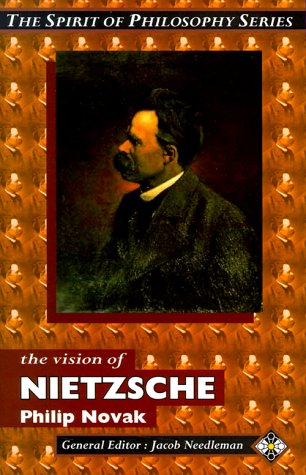

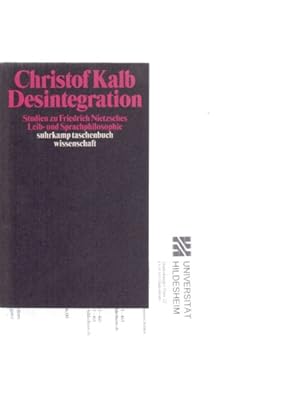

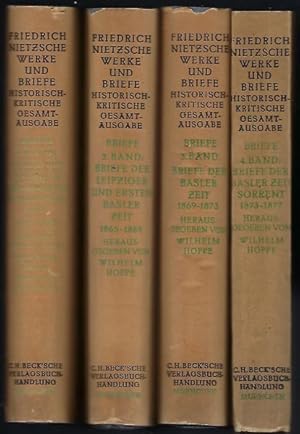
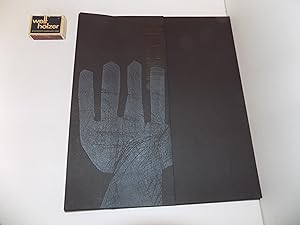
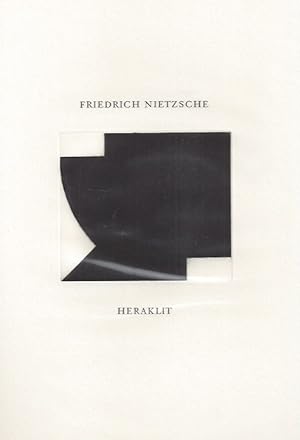
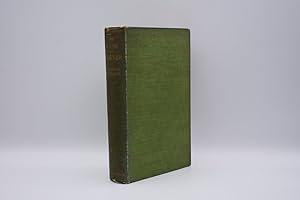
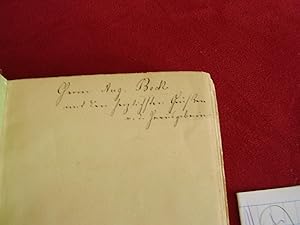

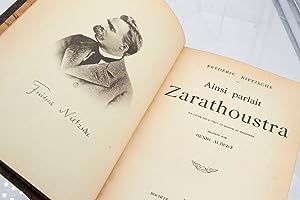
![Seller image for Götzen-Dämmerung oder Wie man mit dem Hammer philosophiert. + Dionysos-Dithyramben. - [WHAT DOES NOT KILL ME ONLY MAKES ME STRONGER] for sale by Lynge & Søn ILAB-ABF](https://pictures.abebooks.com/inventory/md/md10120242157.jpg)